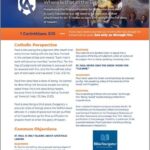Heel pain, especially when walking, can be debilitating. One of the most common culprits is plantar fasciitis, an inflammation of the thick band of tissue (plantar fascia) that runs across the bottom of your foot, connecting your heel bone to your toes. Understanding this condition, its causes, and risk factors can help you find relief and prevent future occurrences.
What is Plantar Fasciitis?
Plantar fasciitis results from tiny tears and inflammation in the plantar fascia, often due to overuse or strain. This strong, supportive tissue acts like a shock absorber, supporting the arch of your foot. When it becomes inflamed, you typically experience sharp, stabbing pain in your heel, most noticeable with your first steps in the morning or after periods of rest. While the pain might lessen with activity, it can return after prolonged standing or sitting.
Common Symptoms of Plantar Fasciitis
The hallmark symptom of plantar fasciitis is a stabbing pain in the heel, often worse in the morning or after periods of inactivity. The pain can also be triggered by:
- First steps after waking: The plantar fascia tightens overnight, making those initial steps particularly painful.
- Prolonged standing: Extended periods on your feet put stress on the plantar fascia, leading to increased pain.
- Getting up after sitting: Similar to morning pain, the fascia tightens while sitting, causing discomfort upon standing.
- Climbing stairs: The plantar fascia is actively engaged when climbing stairs, potentially exacerbating pain.
Understanding the Causes and Risk Factors
While the exact cause of plantar fasciitis isn’t always clear, several factors can increase your risk:
Age:
Plantar fasciitis is most common between the ages of 40 and 60, likely due to natural age-related wear and tear on the plantar fascia.
High-Impact Activities:
Activities that place significant stress on the heels, such as running, dancing, and aerobics, can contribute to the development of plantar fasciitis.
Foot Mechanics:
Conditions like flat feet, high arches, or abnormal walking patterns can alter weight distribution, placing undue stress on the plantar fascia.
Obesity:
Excess weight increases the load on the plantar fascia, making it more susceptible to injury and inflammation.
Occupational Hazards:
Jobs requiring prolonged standing or walking on hard surfaces, like factory work or teaching, increase the risk of plantar fasciitis.
Potential Complications of Untreated Plantar Fasciitis
Ignoring persistent heel pain can lead to chronic issues that impact your daily life. Untreated plantar fasciitis may:
- Cause chronic heel pain: This can interfere with work, exercise, and simple daily activities.
- Alter your gait: Subconsciously changing how you walk to avoid pain can lead to problems in your knees, hips, and back.
- Reduce activity levels: Chronic pain can discourage participation in physical activities, potentially leading to other health issues.
Seeking Relief and Prevention
If you suspect you have plantar fasciitis, it’s crucial to consult a doctor for accurate diagnosis and treatment. Addressing the underlying causes and risk factors is essential for long-term relief and preventing recurrence.
